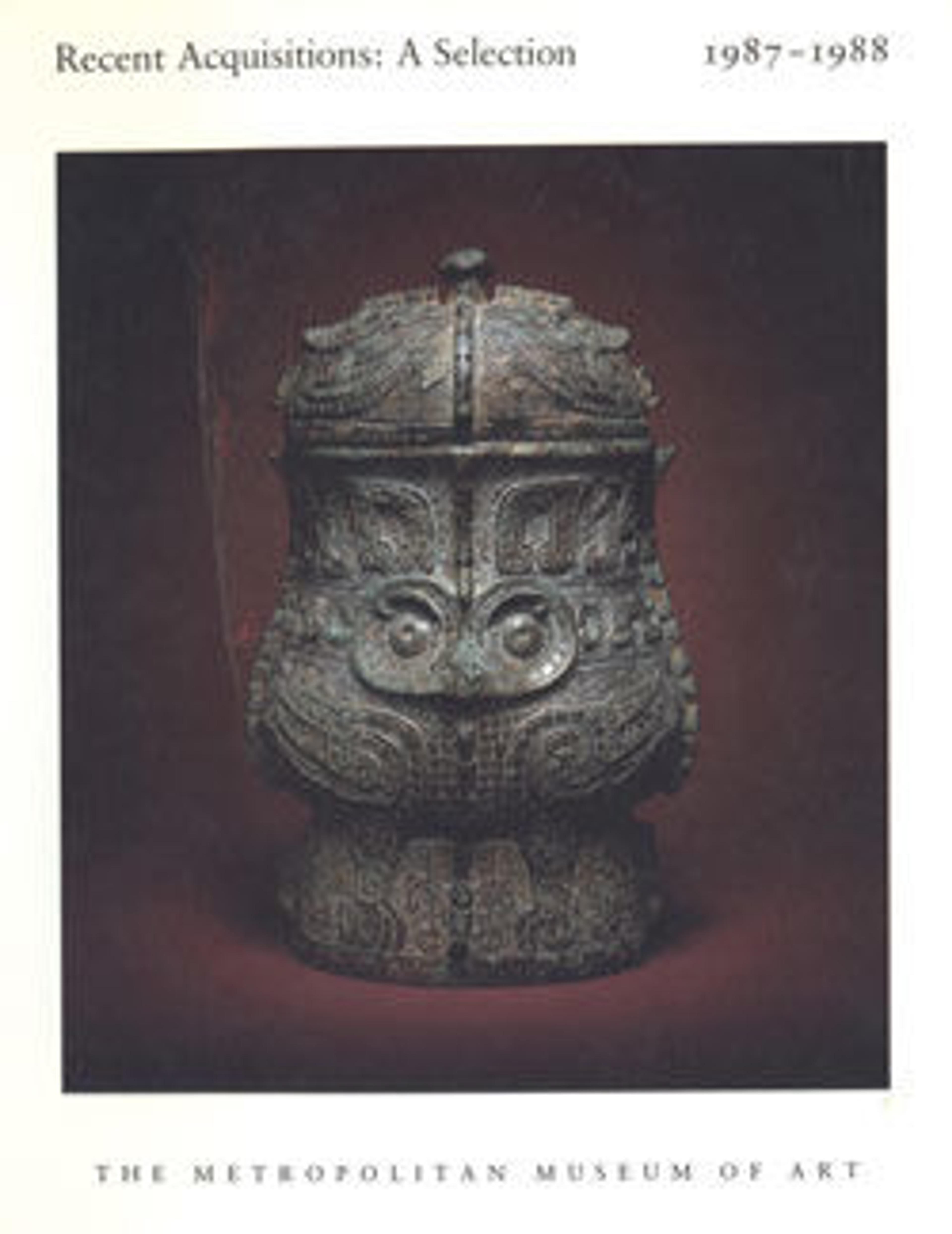Ceremonial Knife (Tumi)
The Moche people of northern Peru (first–seventh century) were among the first to use copper, often with the addition of arsenic to harden the metal and improve the quality of the cast. Moche metalworkers hammered most of their precious metals—gold and silver—into objects of sheet metal, but many works in copper were cast by the lost-wax technique. The Chimú people, who made this ceremonial knife, inherited the rich cultural and artistic traditions developed by the earlier Moche. Clearly a ritual object, indicated by the delicate, projecting details and attractive silhouette, the knife has a semicircular blade. The flat undulating shaft is embellished with circles in relief; stylized birds project from its sides. At the top is a human head wearing a headdress with mushroom shapes. The detailed facial features—wide staring eyes and open mouth framed by age wrinkles—give the face a startled look. The holes in the earlobes once held ornaments. The object is cast of a copper/arsenic alloy; its surface is now covered with copper corrosion developed over many centuries of burial.
Artwork Details
- Title:Ceremonial Knife (Tumi)
- Date:12th–15th century
- Geography:Peru
- Culture:Chimú
- Medium:Copper
- Dimensions:H. 5 13/16 in. (14.8 cm)
- Classification:Metal-Implements
- Credit Line:Bequest of Jane Costello Goldberg, from the Collection of Arnold I. Goldberg, 1986
- Object Number:1987.394.216
- Curatorial Department: The Michael C. Rockefeller Wing
More Artwork
Research Resources
The Met provides unparalleled resources for research and welcomes an international community of students and scholars. The Met's Open Access API is where creators and researchers can connect to the The Met collection. Open Access data and public domain images are available for unrestricted commercial and noncommercial use without permission or fee.
To request images under copyright and other restrictions, please use this Image Request form.
Feedback
We continue to research and examine historical and cultural context for objects in The Met collection. If you have comments or questions about this object record, please contact us using the form below. The Museum looks forward to receiving your comments.
